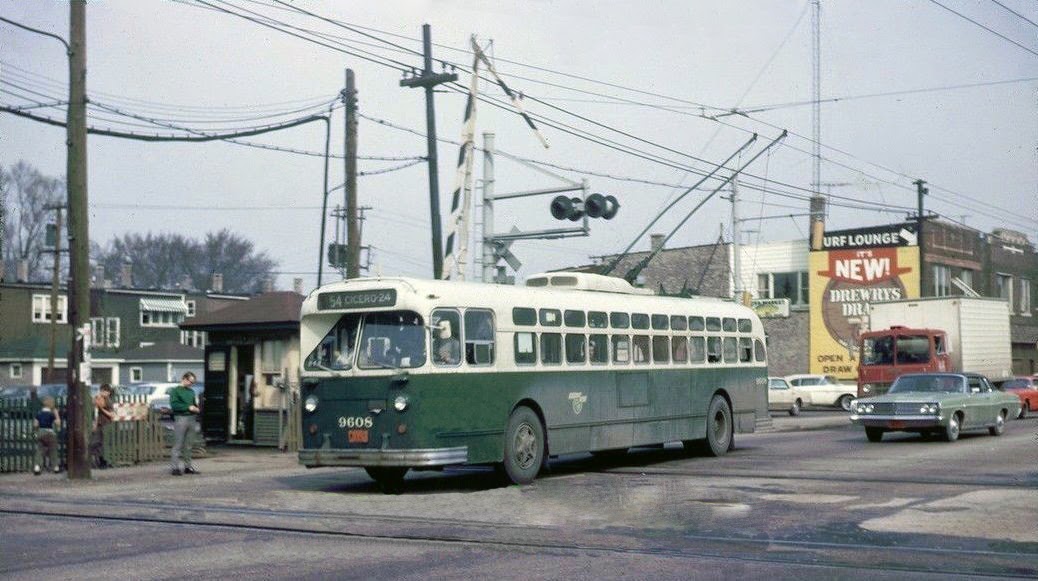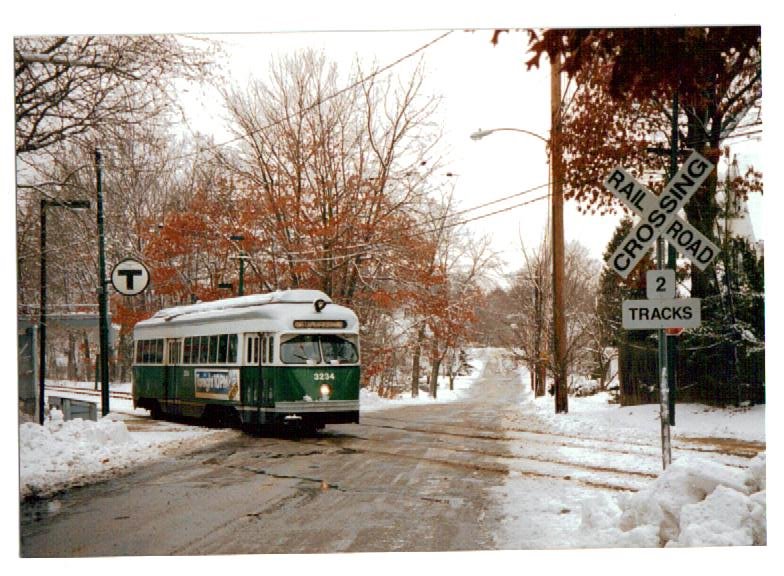- Messages
- 11,082
- Location
- My mother's basement
Unless things have changed since I moved away, "trackless trolleys," with overheard wires, are still much in evidence in Seattle.
What still amazes me about them was the acceleration on the trolley buses. Late at night on a route with little traffic and a wide street (such as Irving Park Road west of Central) , a driver could "open it up:" the speed limit was 30 miles an hour but topping 45 as the wires above literally sang was not unusual. They got rid of 'em in 1973: maintaining the wire on a trolley bus route was six times the cost of a propane (later diesel) bus route. A recent vacation to Vancouver was a trip down memory lane for me as far as riding the trolley buses.
A little known fact was that a bus driver did not need a driver's license to pilot a trolley bus for the Chicago Transit Authority or predecessor Chicago Surface Lines: the electric buses were street railways under law.
Unless things have changed since I moved away, "trackless trolleys," with overheard wires, are still much in evidence in Seattle.
Unless things have changed since I moved away, "trackless trolleys," with overheard wires, are still much in evidence in Seattle.


I looked it up and you are right. But tell me which one would you consider a "working trackless trolly" or a yuppy mobile?
View attachment 63996
Then again, I remember when I was probably four or five, I rode regularly with my parents on track trollys which I know haven't died out like in Frisco. I've have ridden in the Frisco Trollys and really a Frisco Trolly can't hold a candle to THE GREEN HORNET!!!!!!!!!!!!! in style, grace and speed. It's like comparing a VW to a Ferarri.

...They got rid of 'em in 1973: maintaining the wire on a trolley bus route was six times the cost of a propane (later diesel) bus route....
Then again, I remember when I was probably four or five, I rode regularly with my parents on track trollys which I know haven't died out like in Frisco. I've have ridden in the Frisco Trollys and really a Frisco Trolly can't hold a candle to THE GREEN HORNET!!!!!!!!!!!!! in style, grace and speed. It's like comparing a VW to a Ferarri.

 John Lofgren Monkey Boots Shinki Horsebuttt - $1,136 The classic monkey boot silhouette in an incredibly rich Shinki russet horse leather.
John Lofgren Monkey Boots Shinki Horsebuttt - $1,136 The classic monkey boot silhouette in an incredibly rich Shinki russet horse leather.  Grant Stone Diesel Boot Dark Olive Chromexcel - $395 Goodyear welted, Horween Chromexcel, classic good looks.
Grant Stone Diesel Boot Dark Olive Chromexcel - $395 Goodyear welted, Horween Chromexcel, classic good looks.  Schott 568 Vandals Jacket - $1,250 The classic Perfecto motorcycle jacket, in a very special limited-edition Schott double rider style.
Schott 568 Vandals Jacket - $1,250 The classic Perfecto motorcycle jacket, in a very special limited-edition Schott double rider style. Isn't there a collection of restored trolleys running on Market Street in SF?

I looked it up and you are right. But tell me which one would you consider a "working trackless trolly" or a yuppy mobile?
View attachment 63996
The PCC (Presidents’ Conference Committee) cars were developed in the 1930's as a standard design for the North America's streetcar lines. They thought that I was a madman when I landed in Toronto one late night in 1979 and rode them all night (instead of getting a hotel room like a sane man) while waiting for a morning train to Montreal.


There was a time when trolley cars and street railways were a profitable business. The profits began to fade away under competition from cars and buses in the 1920s. In a lot of areas the trolley system was owned by real estate developers as a way to get customers to buy houses in their outlying suburbs. This reason became less compelling as cars became more popular.
By the 1930s many trolley systems were running old, obsolete, worn out cars and couldn't afford to replace them. It was cheaper to scrap the whole system and replace with buses.
The trolley industry fought back with the PCC cars, a standardized design meant to be mass produced at a cheap enough price to compete with buses and give the public a more modern comfortable ride. They were quite successful and were used for 20, 30 years or more.
Today we could have electric buses quieter than the old trolleys, pollution free and at a price competitive with city buses. With today's batteries we would not need the spider web of overhead wires, and with good rubber tires we don't need the trolley tracks.
The next stage will be self driving buses and taxicabs. If we eliminate the driver it becomes possible to run larger numbers of smaller buses, making the system more efficient and convenient for the public. If you replace 1 50 passenger bus with 2 25 passenger buses, you can have a bus every 10 minutes instead of every 20 minutes, and can add extra buses very quickly when there is a demand for them.
New more efficient batteries and self driving vehicles will revolutionize public transport, if we can only get peoples thinking out of the 19th century and into the 21st century.